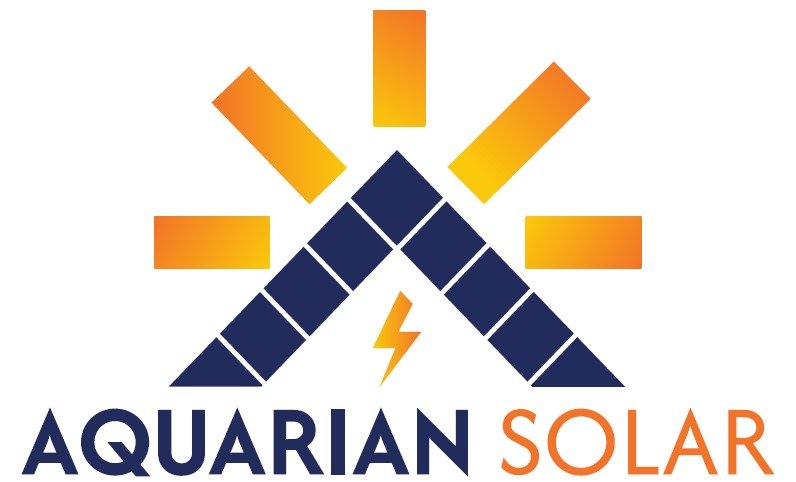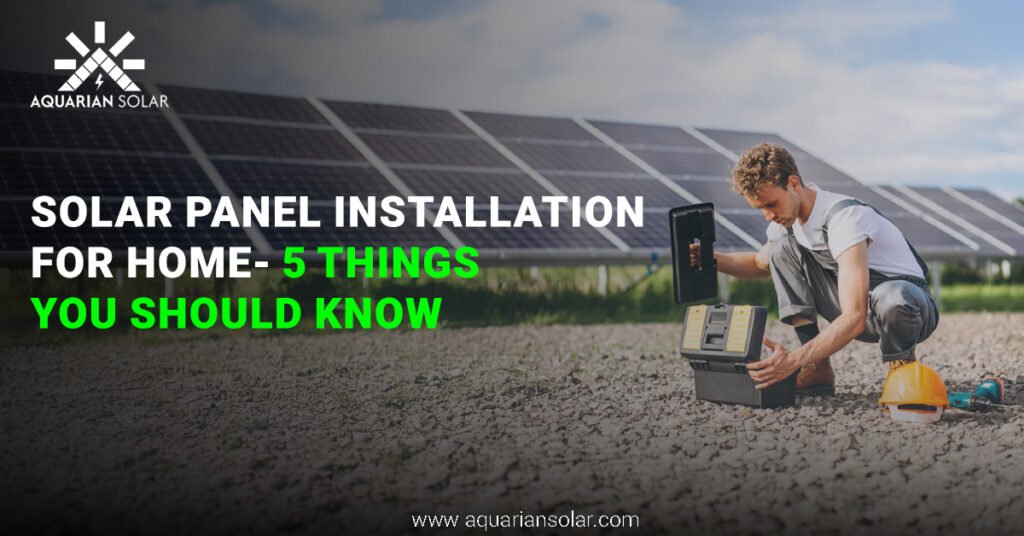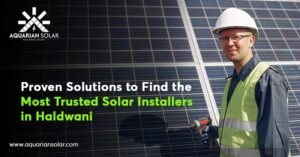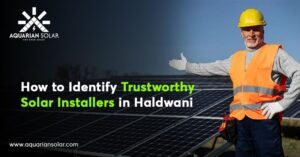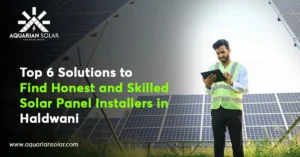As India moves toward a more sustainable energy future, solar power is no longer a distant dream—it’s a smart, accessible solution for homeowners today.
With the cost of traditional electricity increasing and awareness about environmental impacts growing, switching to solar energy is becoming the preferred choice for families looking to cut costs and reduce their carbon footprint.
In regions where sunshine is plentiful year-round—installing solar panels is not just feasible, but incredibly effective. Still, many homeowners hesitate because they’re unsure where to start or what to expect.
To help you make an informed decision, here are five key things you need to know before solar panels installation at home.
1. Evaluate Your Home’s Solar Potential
Before diving into installation, it’s essential to assess whether your home is suitable for solar power generation. Several factors affect how much energy your system will produce and whether it’s worth the investment.
Key Factors to Consider:
- Sunlight Exposure: For maximum efficiency, your roof should receive direct sunlight for most of the day—ideally between 10 AM and 4 PM. North-facing or shaded rooftops may not perform optimally.
- Roof Size and Structure: A 1kW solar system typically requires 80–100 square feet of shadow-free area. Larger systems, which are common in medium to large households, need proportionally more space.
- Roof Orientation and Angle: In India, south-facing rooftops are best for solar production. The ideal tilt angle for your solar panels will depend on your geographical location but typically ranges from 10° to 30°.
- Structural Strength: Ensure your roof is strong enough to hold the weight of solar panels, mounts, and other components. If the roof is old or in poor condition, it may need repairs or reinforcement.
At Aquarian Solar, we offer site assessments to help homeowners determine if their rooftops are suitable for solar power and what type of system would be most effective.
2. Understand the Different Types of Residential Solar Systems
Not all solar systems are created equal. Depending on your power needs, location, and whether your area experiences frequent power cuts, you may need a different type of solar setup.
Types of Solar Panel Systems:
1. On-Grid (Grid-Tied) Systems – These systems are connected to the main electricity grid.
- Ideal for areas with reliable power supply
- Excess electricity is sent back to the grid via net metering
- You draw power from the grid at night or when demand exceeds production
- These systems do not function during a power outage unless integrated with a backup
2. Off-Grid Systems – These are standalone systems not connected to the electricity grid.
- All electricity comes from your solar panels
- Batteries are required to store power for use during nights or cloudy days
- Ideal for remote or rural areas without stable electricity
- Higher upfront cost due to battery storage
3. Hybrid Systems – A hybrid system combines features of both on-grid and off-grid models.
- Allows you to store solar energy and connect to the grid
- Offers the most flexibility and reliability
- Can be designed to operate independently during outages
Each system type has unique benefits, and the right one depends on your household’s energy consumption, your budget, and the grid infrastructure in your area.
3. Costs, Incentives, and Payback Period
Solar installation is an investment—but one that pays for itself over time. Understanding the costs and financial incentives can help you better plan your transition.
Typical Cost Breakdown (Residential Use):
| System Size | Approximate Cost (Before Subsidy) |
| 1 kW | ₹60,000 – ₹75,000 |
| 3 kW | ₹1,80,000 – ₹2,25,000 |
| 5 kW | ₹3,00,000 – ₹3,75,000 |
These prices vary based on the quality of components (panels, inverters, batteries), installation complexity, and your roof’s condition.
Government Subsidies (Updated for 2025):
Through initiatives like the PM Surya Ghar Muft Bijli Yojana, homeowners can now avail generous subsidies:
- 40% subsidy for systems up to 3 kW
- 20% subsidy for systems between 3–10 kW
- Additional benefits for group housing and societies
To be eligible, the system must be installed through an MNRE-empaneled vendor, such as Aquarian Solar.
Return on Investment (ROI):
- Average payback period: 4 to 6 years
- After that, the electricity generated is essentially free
- Most systems come with a 25-year performance warranty, ensuring decades of savings
Solar not only reduces your monthly electricity bills but also protects you from future tariff hikes.
4. Choose Quality Equipment and a Trusted Installer
A solar system is a long-term investment. Choosing the right equipment and installation partner is crucial for maximizing performance, safety, and reliability.
Installing high-quality solar panels is critical to the long-term success of your solar system.
Key Solar Components:
- Solar Panels: Look for Tier-1, BIS-certified monocrystalline panels with high efficiency ratings and long-term performance warranties (typically 25 years).
- Inverters: These convert the DC electricity generated by panels into usable AC power. Choose reliable brands offering good service support and warranty coverage (5–10 years).
- Mounting Structures: These should be corrosion-resistant and designed to withstand regional wind loads and weather conditions.
- Batteries (optional): For off-grid or hybrid systems, use high-quality batteries with a long cycle life. Lithium-ion batteries, while more expensive, offer better efficiency and durability compared to lead-acid batteries.
Selecting the Right Installer:
- Ensure they are MNRE-empaneled and licensed
- Ask for references and past project examples
- Understand what’s included—site assessment, design, installation, grid application, net metering setup, and after-sales support
- Compare warranties and service guarantees
At Aquarian Solar, we provide end-to-end solar solutions—from rooftop inspection to post-installation monitoring and maintenance—to ensure complete peace of mind.
5. Maintenance and Monitoring After Installation
Once your solar system is installed, regular maintenance and performance monitoring will keep it running efficiently for years to come.
Maintenance Essentials:
- Panel Cleaning: In dusty or high-pollution areas, panels should be cleaned at least once every 2–4 weeks using soft water and non-abrasive materials. Dirty panels can reduce efficiency by 10–25%.
- Visual Inspection: Check for visible wear, loose connections, or corrosion in wiring and mounts.
- Battery Health (if applicable): Keep an eye on charge levels and discharge cycles. Replace batteries as per the manufacturer’s recommended life cycle. Inverter Status: Most inverters display system errors or connectivity issues. Monitor these regularly.
System Monitoring:
Most modern solar systems offer real-time monitoring via a mobile app or web dashboard. These tools provide:
- Daily energy production data
- System health alerts
- Net metering details
- Comparison between expected vs. actual performance
Monitoring your system helps you identify performance drops early and ensures you’re getting full value from your investment.
Conclusion
Installing solar panels is not just a trend—it’s a smart, sustainable move that benefits your finances and the planet. With a lifespan of 25+ years, minimal maintenance, and solid government incentives, the time to go solar is now.
By understanding your home’s solar potential, selecting the right system type, planning your budget, choosing quality equipment, and committing to regular maintenance, you set yourself up for long-term energy independence.
At Aquarian Solar, we are committed to delivering high-quality solar solutions that are efficient, affordable, and tailored to your unique needs. Our team is ready to guide you every step of the way. Contact us today.
